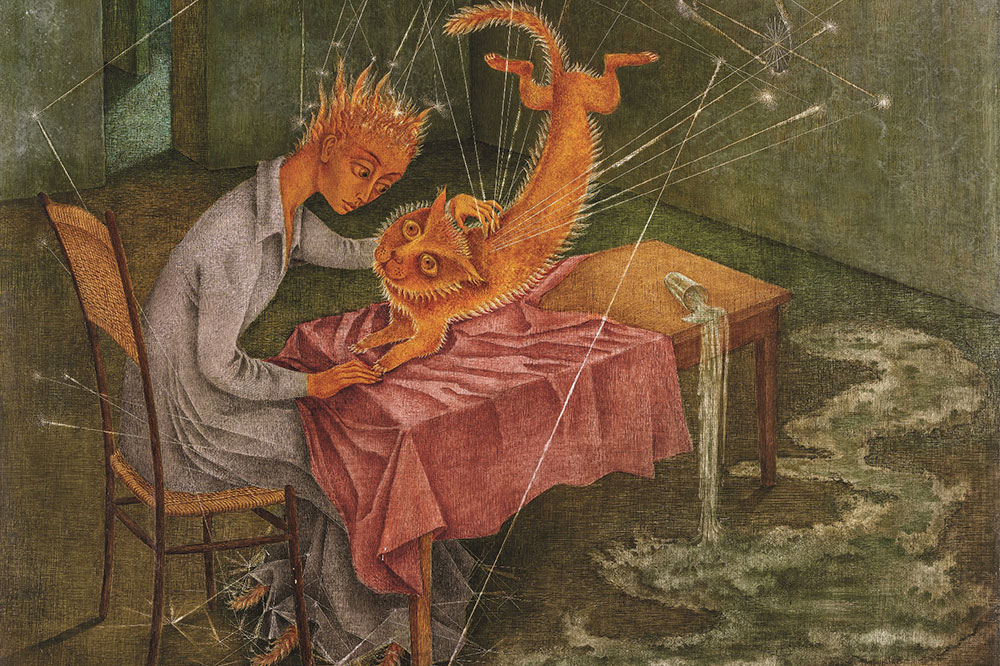Music is not merely auditory filler, but rather an element that, like sun or wind or water, might be exploited. In Armonía (Harmony) from 1956, a composer manipulates an instrument resembling a musical staff and mysterious figures emerge from the walls. In Vuelo mágico (Magic Flight), also from 1956, the music from a hurdy-gurdy propels aloft a figure wearing a coat with kite-like flaps. Música Solar (Solar Work) of 1955 shows a figure covered by a grassy cloak pulling a violin bow across a sunbeam.
Exploración de las fuentes del río Orinoco (Exploration of the Sources of the Orinoco River) (1959), Remedios Varo. Private collection
Perhaps I’m responding to the current socio-political climate, where the wellness industry overlaps with anti-vaxxer conspiracy theories, but I find myself less interested in the ‘fiction’ part of Varo’s work and more intrigued by the ‘science’. Despite her disavowal of ‘rational’ thinking, many of the machines she depicted seem plausible. The drawstrings I was trying to manipulate, for example, are what controls the splendid egg-shaped watercraft drifting in a flooded forest in Exploración de las fuentes del río Orinoco (Exploration of the Sources of the Orinoco River) of 1959. The painting was, as the title implies, inspired by the recent discovery of the Orinoco River’s source, a mystery that had puzzled explorers for centuries. Varo was fascinated by the river while she lived in Venezuela for a year in the late 1940s and accompanied a scientific expedition looking for gold along the Orinoco. The potential of water to create energy was also familiar to her; Varo’s father, a hydraulic engineer who designed canals in Morocco, taught her how to draw. To emphasise Varo’s world-building abilities, the exhibition includes a selection of science fiction novels from her library. Yet I would have liked to have learned more about Varo’s technical interests. Did she, like Leonardo, in whose ideas she was interested, ever produce designs with the object of seeing them realised?
Varo lived through two world wars and was no stranger to suffering (she spent time in the winter of 1940 in prison in France), yet she was also alive during an extraordinary period of innovation and exploration, both literal and figurative: geographic exploration of the land and the discovery of unmapped sites paralleled psychological exploration of the mind and the discovery of the unconscious. (At one point her livelihood came from making drawings for pharmaceutical companies advertising drugs to alleviate anxiety.) In Mujer saliendo del psicoanalista (Podría ser Juliana) (Woman Leaving the Psychoanalyst [Could Be Juliana]) of 1960, an elegant woman wearing a bright green shawl-like coat that conceals her mouth casually deposits a ghostly bearded head into a well. This may be Varo’s most overtly feminist work, at least in this exhibition; as the woman dispatches this patriarchal figure, her white hair parts in the middle and curves from the top of her head like horns. What will this woman do, now that she has liberated herself? If the works in this show are any guide, there is no limit to what she might achieve.
